#automobile manufacturing landscape
Explore tagged Tumblr posts
Text
7 Unbeatable Benefits of Adopting Digitization & Automation for Automobile Manufacturers
The automobile manufacturing landscape is witnessing radical transformations due to the integration of digitization and automation. Here’s a take from TAAL Tech’s Assistant Vice President, Vishnu Shetty, on the top benefits of digitization and automation for automakers.
Check out the top 7 benefits of digitization and automation in the automobile manufacturing sector.
1. Sensors and AI for Increased Productivity & Cost Savings
Automation has enabled automobile manufacturers to increase their production capacity, reduce lead times, and minimize production errors. With automation, production processes are streamlined alongside ensuring high-throughput rates. Digitalization of auto-manufacturing plants can reduce machine downtime and lower plant maintenance costs significantly by optimizing inventory management and reducing labor costs.
Installation of sensors in manufacturing plants can arm automakers with a range of benefits, such as the ability to diagnose operational or functional defects and predicting future usage. Any part of a vehicle will not function as it should if not fed with the appropriate amount of material. Insufficient or excessive material can lead to component tearing and instability. Sensor-equipped technology can automatically adjust this amount by a certain process, thereby enhancing quality and accuracy during the stamping process and subsequently improving overall productivity and cost-efficiency by reducing the number of rejected parts.
Click here to know more about : https://bit.ly/3NMRvIh

#automobile manufacturing landscape#adoptingdigitization#automation#automobilemanufacturers#industry#software#hardware#electronicsystems#productivity#costsavings#qualitycontrol#safermanufacturingenvironment#customersatisfaction#bigdata#integratedsolutions#sustainablemanufacturing#thoughtleadership#articles#taaltech#taaltechies#taaltechnews
0 notes
Text

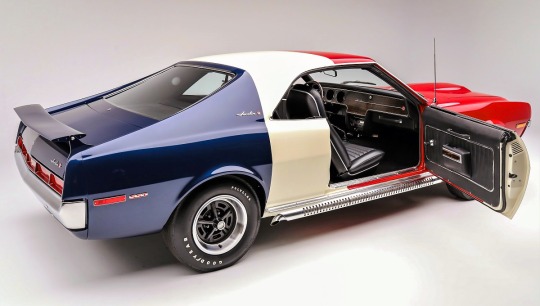
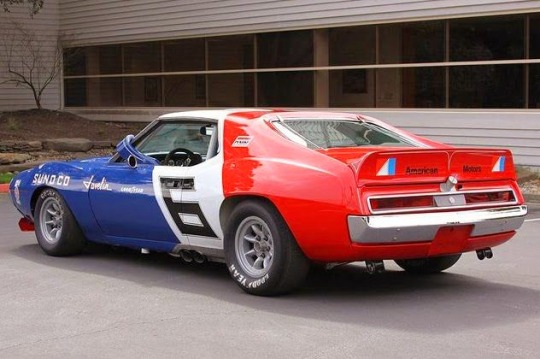



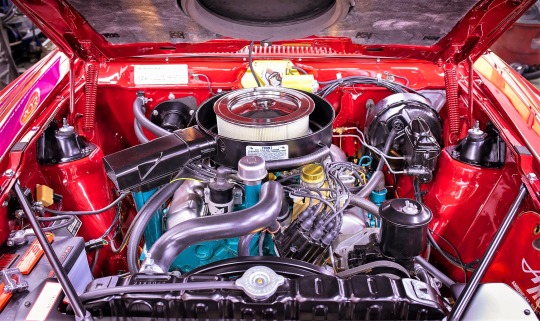
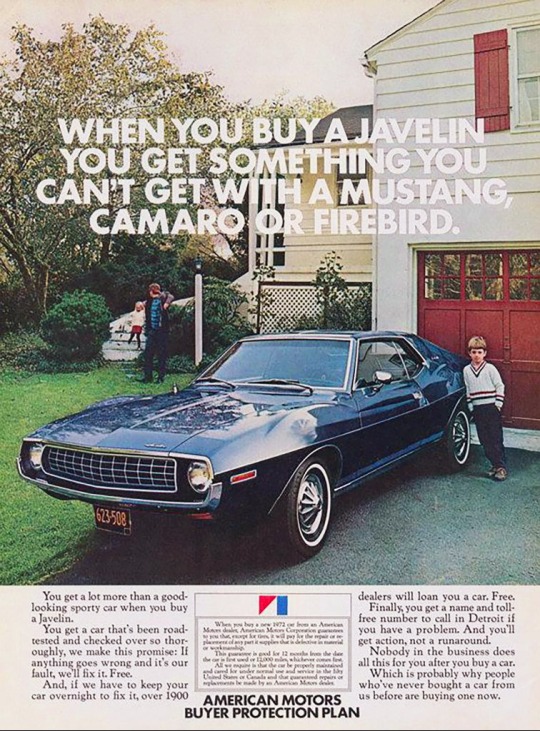
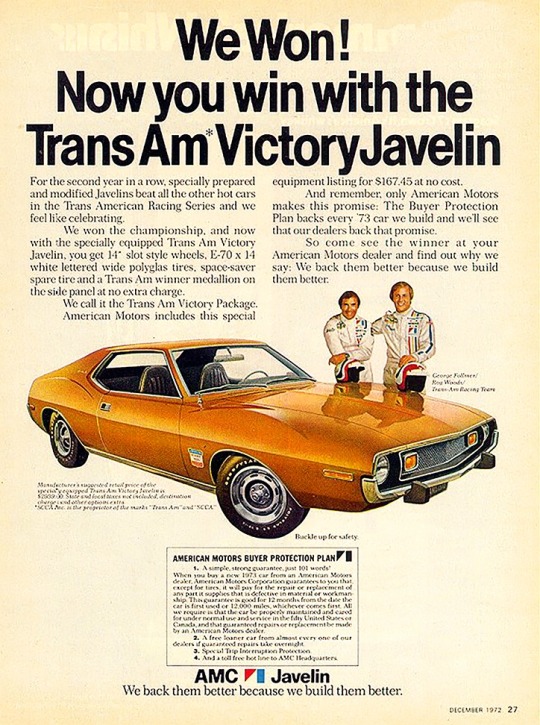

🇺🇲 Step back in time and experience the roar of the iconic AMC Javelin, a true legend of American muscle cars! Introduced in 1967 by American Motors Corporation (AMC), the Javelin was a front-engine, rear-wheel-drive, two-door hardtop automobile manufactured across two generations, spanning from 1968 through 1970 and then from 1971 through 1974 model years. It was designed to compete in the pony car market segment against rivals like the Ford Mustang and Chevrolet Camaro.
🚗💨 The AMC Javelin burst onto the scene in 1968, showcasing a sleek design and powerful engines. Styled by Dick Teague, the Javelin offered a range of trim and engine levels, from economical pony car variants to high-performance muscle car models. Its distinctive appearance, featuring a long hood and aggressive stance, turned heads on the streets and racetracks alike.
🏭 Besides being manufactured in Kenosha, Wisconsin, Javelins were also assembled under license in Germany, Mexico, the Philippines, Venezuela, and Australia, showcasing its global reach. American Motors even offered discounts to U.S. military personnel, leading to many Javelins being exported overseas.
🛞 Under the hood, the Javelin packed serious power. It was available with inline-six engines or potent V8s, delivering thrilling acceleration and speed. The AMX variant, equipped with a 6.4-liter V8, boasted over 300 horsepower!
🏆 The AMC Javelin wasn't just about looks—it excelled on the track too. It competed in Trans-Am racing, demonstrating its speed and agility. In fact, the second-generation AMX variant was the first pony car used as a standard vehicle for highway police car duties by an American law enforcement agency. Today, the Javelin's unique style and racing heritage make it a sought-after classic among collectors.
💔 By 1974, the automobile landscape had shifted. While other manufacturers downsized engines in response to changing market demands and fuel shortages, the Javelin's big engine option continued until production ceased in November 1974 amidst the Arab oil embargo and declining interest in high-performance vehicles.
🦅 The AMC Javelin embodies the spirit of American muscle cars, blending style, performance, and affordability. It's a timeless classic that continues to capture the hearts of car enthusiasts everywhere. Get ready to hit the road and experience the thrill of the AMC Javelin!
#brits and yanks on wheels#retro cars#transatlantic torque#vehicle#cars#old cars#brands#companies#automobile#american cars#amc#american motors#american muscle#amc javelin#javelin#muscle car#pony car#race car#trans am#old car#classic cars#car#american auto#automotive#chevrolet camaro#chrysler#wisconsin#kenosha#made in usa#ford mustang
305 notes
·
View notes
Text
Have you thought of why there is a shift from Sedans to SUVs in the Automobile Industry
What forced companies like Aston Martin, Lamborghini, Ferrari , and Bugatti to manufacture SUVs ???
Lets know ,
In recent years, the automobile industry has witnessed a significant shift from sedans to SUVs, a trend that reflects changing consumer preferences, lifestyle demands, and market dynamics. This transformation is not just a fleeting fad but a substantial evolution that has reshaped the automotive landscape.
One of the primary reasons for this shift is the increasing consumer desire for versatility and space. SUVs offer a higher seating position, more cargo capacity, and the ability to accommodate larger families or groups. As urban lifestyles evolve, many consumers are seeking vehicles that can handle a variety of needs, from daily commutes to weekend adventures. This versatility makes SUVs particularly appealing, especially in markets where outdoor activities and travel are popular.
Additionally, the perception of safety plays a crucial role in the popularity of SUVs. Many consumers feel that larger vehicles provide better protection in the event of a collision. This belief, coupled with advancements in technology that enhance safety features, has contributed to the growing preference for SUVs over traditional sedans. Automakers have responded to this demand by expanding their SUV offerings, introducing models that cater to various segments, from compact crossovers to full-size SUVs, thus capturing a broader audience.
Moreover, the rise of electric and hybrid SUVs is further fueling this trend. As environmental concerns gain traction, manufacturers are investing heavily in electric vehicle (EV) technology, with many choosing to launch electric SUVs. This not only aligns with consumer preferences for eco-friendly options but also reflects a commitment to sustainability in the automotive industry. With the combination of practicality, safety, and eco-consciousness, it's clear why consumers are gravitating towards SUVs.
In conclusion, the shift from sedans to SUVs in the automobile industry is driven by a combination of consumer preferences for versatility, safety perceptions, and the rise of eco-friendly options. As this trend continues to evolve, it will undoubtedly shape the future of vehicle design and manufacturing, making SUVs a dominant force in the automotive market.
#ferrari#lamborghini#aston martin#bentley#bugatti#general motors#chevrolet#cadillac#hyundai#maruti suzuki#mercedes#bmw#volkswagen#toyota#mahindra#mini cooper#honda#tata motors
6 notes
·
View notes
Text
The Evolution of Automobiles: A Journey Through Time

Introduction
The history of automobiles is a fascinating tale of innovation, determination, and human ingenuity. From the earliest steam-powered contraptions to the sleek electric vehicles of today, cars have shaped our lives, economies, and landscapes. Let’s embark on a journey through time to explore the milestones, inventors, and revolutions that define the world of automobiles.
1. The Pioneers
a. Nicolas-Joseph Cugnot and the Steam Carriage (1769)
In a small workshop in France, Nicolas-Joseph Cugnot built the first self-propelled vehicle. His steam-powered carriage, known as the “Fardier à vapeur,” could carry passengers and cargo. Although slow and cumbersome, it marked the birth of the automobile.
b. Karl Benz and the Benz Patent-Motorwagen (1886)
Fast-forward to the late 19th century. Karl Benz, a German engineer, unveiled the Benz Patent-Motorwagen. It was the first true automobile powered by an internal combustion engine running on gasoline. With three wheels, a single-cylinder engine, and a top speed of 16 km/h (10 mph), the Motorwagen revolutionized transportation.
2. The Model T Era
a. Henry Ford and the Model T (1908)
Henry Ford’s vision was to make cars accessible to everyone. In 1908, he introduced the Model T, an affordable, mass-produced vehicle. The assembly line revolutionized manufacturing, and soon, millions of Model Ts rolled off the production line. The car became a symbol of progress and freedom.
3. The Roaring Twenties and Streamlined Designs
a. Art Deco and Streamlining
The 1920s witnessed a shift in car design. Art Deco influences brought elegance and symmetry to automobile aesthetics. Streamlining, inspired by aviation, emphasized sleek curves and aerodynamic shapes. Cars like the Chrysler Airflow and the Bugatti Type 57 exemplified this trend.
4. Post-War Boom and Muscle Cars
a. Post-World War II Boom
After World War II, car production soared. Families embraced sedans like the Chevrolet Bel Air and the Ford Fairlane. The 1950s saw tailfins, chrome, and optimism. Drive-in theaters and roadside diners became part of the American dream.
b. Muscle Cars and Horsepower Wars
The 1960s brought muscle cars—powerful, V8-engine beasts. The Ford Mustang, Chevrolet Camaro, and Dodge Charger ruled the streets. The horsepower wars escalated, and drag racing became a cultural phenomenon.
5. Environmental Concerns and Innovations
a. Oil Crisis and Compact Cars
The 1970s oil crisis shifted priorities. Compact cars like the Volkswagen Beetle and Toyota Corolla gained popularity. Fuel efficiency and emissions control became critical.
b. Hybrid and Electric Cars
In the 21st century, environmental awareness led to hybrid and electric vehicles. The Toyota Prius pioneered hybrid technology, while Tesla’s electric cars redefined performance and sustainability.
6. The Road Ahead: Autonomous Vehicles and Beyond
a. Autonomous Driving
Self-driving cars are no longer science fiction. Companies like Waymo and Tesla are pushing the boundaries of autonomy. The future promises safer roads and shared mobility.
b. Sustainability and Beyond
As we move forward, sustainability remains paramount. Hydrogen fuel cells, solar-powered cars, and urban mobility solutions will shape the next chapters in automotive history.
Conclusion
From steam carriages to electric supercars, the automobile’s evolution mirrors our progress as a society. Each turn of the wheel brings new challenges, innovations, and dreams. So, fasten your seatbelt—we’re still on an exhilarating ride
3 notes
·
View notes
Text
FDI in India: Unleashing Growth Potential in 2024

Introduction
Foreign Direct Investment (FDI) has been a cornerstone of India's economic growth, driving industrial development, technological advancement, and job creation. As we move into 2024, the FDI landscape in India is poised for substantial growth, bolstered by a favorable policy environment, a burgeoning consumer market, and strategic government initiatives. This blog delves into the potential of FDI in India for 2024, examining the key sectors attracting investment, the regulatory framework, and the strategies investors can employ to navigate this dynamic market.
The Significance of FDI in India
FDI is crucial for India’s economic progress, providing the capital, technology, and expertise needed to enhance productivity and competitiveness. It facilitates the integration of India into the global economy, stimulates innovation, and creates employment opportunities. Over the past decade, India has emerged as one of the top destinations for FDI, reflecting its economic resilience and strategic importance.
Historical Context and Recent Trends
India's FDI inflows have shown a consistent upward trend, reaching record levels in recent years. According to the Department for Promotion of Industry and Internal Trade (DPIIT), India attracted FDI inflows worth $81.72 billion in 2021-22, highlighting its strong appeal among global investors. The sectors that have traditionally attracted significant FDI include services, telecommunications, computer software and hardware, trading, construction, and automobiles.
Key Factors Driving FDI in India
1. Economic Growth and Market Size
India's economy is one of the fastest-growing in the world, with a projected GDP growth rate of around 6-7% in 2024. The country’s large and youthful population offers a vast consumer base, making it an attractive market for foreign investors. The rising middle class and increasing disposable incomes further fuel demand across various sectors.
2. Strategic Government Initiatives
The Indian government has implemented several initiatives to make the country more investor-friendly. Programs like 'Make in India,' 'Digital India,' and 'Startup India' are designed to boost manufacturing, digital infrastructure, and entrepreneurial ventures. These initiatives, coupled with reforms in labor laws and ease of doing business, create a conducive environment for FDI.
3. Infrastructure Development
Significant investments in infrastructure development, including roads, railways, ports, and urban infrastructure, enhance connectivity and logistics efficiency. The development of industrial corridors and smart cities further improves the attractiveness of India as an investment destination.
4. Favorable Regulatory Environment
India has progressively liberalized its FDI policy, allowing 100% FDI in most sectors under the automatic route. This means that foreign investors do not require prior government approval, simplifying the investment process. The government has also streamlined regulatory procedures and improved transparency to facilitate ease of doing business.
Key Sectors Attracting FDI in 2024
1. Technology and Digital Economy
The technology sector continues to be a magnet for FDI, driven by India’s growing digital ecosystem, skilled workforce, and innovation capabilities. Investments in software development, IT services, and emerging technologies like artificial intelligence, blockchain, and cybersecurity are expected to surge.
2. Manufacturing and Industrial Production
The 'Make in India' initiative aims to transform India into a global manufacturing hub. Key sectors attracting FDI include electronics, automobiles, pharmaceuticals, and renewable energy. The Production-Linked Incentive (PLI) schemes introduced by the government provide financial incentives to boost manufacturing and attract foreign investment.
3. Healthcare and Biotechnology
The COVID-19 pandemic has underscored the importance of healthcare infrastructure and innovation. India’s pharmaceutical industry, known for its generic drug production, continues to attract substantial FDI. Additionally, biotechnology and medical devices are emerging as significant sectors for investment.
4. Infrastructure and Real Estate
Infrastructure development is critical for sustaining economic growth. Sectors like transportation, logistics, urban development, and real estate offer significant investment opportunities. The government's focus on developing smart cities and industrial corridors presents lucrative prospects for foreign investors.
5. Renewable Energy
With a commitment to achieving net-zero emissions by 2070, India is focusing on renewable energy sources. The solar, wind, and hydroelectric power sectors are witnessing substantial investments. The government's policies and incentives for green energy projects make this a promising area for FDI.
Regulatory Framework for FDI in India
Understanding the regulatory framework is essential for investors looking to enter the Indian market. The key aspects of India's FDI policy include:
1. FDI Policy and Routes
FDI in India can be routed through the automatic route or the government route. Under the automatic route, no prior approval is required, and investments can be made directly. Under the government route, prior approval from the concerned ministries or departments is necessary. The sectors open to 100% FDI under the automatic route include:
- Infrastructure
- E-commerce
- IT and BPM (Business Process Management)
- Renewable Energy
2. Sectoral Caps and Conditions
While many sectors allow 100% FDI, some have sectoral caps and conditions. For example:
- Defense: Up to 74% FDI under the automatic route, and beyond 74% under the government route in certain cases.
- Telecommunications: Up to 100% FDI allowed, with up to 49% under the automatic route and beyond that through the government route.
- Insurance: Up to 74% FDI under the automatic route.
3. Regulatory Authorities
Several regulatory authorities oversee FDI in India, ensuring compliance with laws and policies. These include:
- Reserve Bank of India (RBI): Oversees foreign exchange regulations.
- Securities and Exchange Board of India (SEBI): Regulates investments in capital markets.
- Department for Promotion of Industry and Internal Trade (DPIIT): Formulates and monitors FDI policies.
4. Compliance and Reporting Requirements
Investors must comply with various reporting requirements, including:
- Filing of FDI-related returns: Periodic filings to RBI and other regulatory bodies.
- Adherence to sector-specific regulations: Compliance with industry-specific norms and guidelines.
- Corporate Governance Standards: Ensuring adherence to governance standards as per the Companies Act, 2013.
Strategies for Navigating the FDI Landscape
1. Thorough Market Research
Conducting comprehensive market research is crucial for understanding the competitive landscape, consumer behavior, and regulatory environment. Investors should analyze market trends, identify potential risks, and evaluate the long-term viability of their investment.
2. Partnering with Local Entities
Collaborating with local businesses can provide valuable insights into the market and help navigate regulatory complexities. Joint ventures and strategic alliances with Indian companies can facilitate market entry and expansion.
3. Leveraging Government Initiatives
Tapping into government initiatives like 'Make in India' and PLI schemes can provide financial incentives and support for setting up manufacturing units and other projects. Staying updated on policy changes and leveraging these initiatives can enhance investment returns.
4. Ensuring Legal and Regulatory Compliance
Compliance with local laws and regulations is paramount. Engaging legal and financial advisors with expertise in Indian regulations can ensure that all legal requirements are met. This includes obtaining necessary approvals, adhering to reporting norms, and maintaining corporate governance standards.
5. Focusing on Sustainable Investments
Given the global emphasis on sustainability, investments in green technologies and sustainable practices can offer long-term benefits. The Indian government’s focus on renewable energy and sustainable development provides ample opportunities for environmentally conscious investments.
Conclusion
India's FDI landscape in 2024 is ripe with opportunities across various sectors, driven by robust economic growth, strategic government initiatives, and a favorable regulatory environment. However, navigating this dynamic market requires a deep understanding of the legal and regulatory framework, thorough market research, and strategic partnerships.
For investors looking to unleash the growth potential of their investments in India, staying informed about policy changes, leveraging government incentives, and ensuring compliance with local laws are critical. By adopting a strategic approach and focusing on sustainable investments, foreign investors can tap into the immense opportunities offered by the Indian market and contribute to its economic transformation.
In conclusion, FDI in India in 2024 presents a compelling opportunity for global investors. With the right strategies and guidance, investors can navigate the complexities of the Indian market and achieve significant growth and success.
This post was originally published on: Foxnangel
#fdi in india#fdi investment in india#foreign direct investment in india#economic growth#foreign investors#startup india#pli schemes#renewable energy#indian market#foxnangel
2 notes
·
View notes
Text

India's Booming Economy: Is Now the Time to Launch Your Company?
India's economic landscape is undergoing a remarkable transformation. Projected to be the world's third-largest economy by 2030, the country. India's booming economy presents a compelling opportunity for entrepreneurs.
Capitalizing on the Indian Opportunity:
If you're considering launching your company in India, here are some key sectors to explore:
Technology: From software development to e-commerce, India is a hub for tech innovation.
Manufacturing: The push for domestic manufacturing creates opportunities in sectors like automobiles, textiles, and pharmaceuticals.
Healthcare: With a growing population and rising healthcare needs, India's healthcare sector presents promising potential.
Education: India's young population requires a robust education system. Edtech solutions and skill development initiatives hold significant promise.
Challenges to Consider:
Despite the exciting prospects, launching a business in India comes with its own set of challenges:
Navigating Regulations: India's regulatory environment can be complex. It's crucial to seek guidance to ensure compliance.
Infrastructure Development: While infrastructure is improving, logistical bottlenecks can sometimes hinder operations.
Competition: The Indian market is increasingly competitive. A strong value proposition and well-defined target audience are essential for success.
SetMyCompany will carefully evaluating your business model, understanding the market landscape, and partnering with experienced advisors, you can leverage the country's growth potential and position your company for success.
Ready to Explore Further with SetMyCompany?
We Conduct In-Depth Market Research: Understand the specific needs and preferences of your target audience.
Network with Industry Experts and Potential Partners: Gain valuable insights and forge strategic connections.
We will handle all your End-to-End Legal and Financial Professionals:
#Rigistering the firm, #Bookkeeping,#Payrollservice,#HR Operation's, Auditing and Taxation services.
With a well-defined strategy and a commitment to long-term success, India's economic boom could be the perfect springboard for your next big venture.
#tax#payroll#accounting#business#finance#employer of record services#peo payroll service#eor service#register a business in india
2 notes
·
View notes
Text

GRAY AUDI R8
Digital art has opened up a world of endless creative possibilities, allowing artists to reimagine reality in captivating ways. The stunning digital rendering of an Audi R8 driving through the city is a testament to the boundless potential of this medium.
The sleek lines and futuristic design of the Audi R8 come to life in this mesmerizing digital artwork. The vivid portrayal of the car's distinct features, from its signature LED headlights to its aerodynamic silhouette, showcases the meticulous attention to detail and the artist's skillful command of digital tools.
As the digital Audi R8 cruises through the city streets, the vibrant cityscape is brought to life with an array of mesmerizing details. The play of light and shadow creates a dynamic atmosphere, casting a captivating glow on the sleek body of the car as it effortlessly navigates through the urban landscape.
The city comes alive with a symphony of color and movement, capturing the energy and vibrancy of metropolitan life. The reflection of city lights on the car's polished surface adds an extra layer of depth and realism, immersing the viewer in the digital rendition of this awe-inspiring scene.
The digital art evokes a sense of wonder and excitement, drawing the viewer into a world where the boundary between reality and imagination blurs. The attention to detail and expert use of digital techniques make this artwork a stunning homage to the Audi R8, conveying the spirit of innovation and elegance that defines this iconic automobile.
In the digital realm, the Audi R8 becomes more than a car; it is a symbol of artistry and technological prowess, showcasing the endless possibilities of digital creativity. This captivating artwork invites the viewer to embark on a virtual journey through the city, where the lines between the tangible and the digital fade away, leaving only the allure of the Audi R8 and the promise of endless adventure.

Audi is a renowned automobile manufacturer that has been producing luxury vehicles for over a century. The company was founded in 1910 by August Horch and originally named Audi Automobilwerke GmbH Zwickau. The name "Audi" is derived from the Latin translation of August Horch's last name, which means "listen" in German.
Audi's history is marked by innovation and technological advancement. In the 1930s, the company gained recognition for its powerful and efficient racing cars, which solidified its reputation for performance and quality. However, the onset of World War II halted production, and it wasn't until the 1960s that Audi experienced a renaissance under the ownership of Volkswagen Group.
In recent years, Audi has focused on sustainability and electric mobility, with the goal of offering a fully electric lineup by 2026. The company's commitment to environmental responsibility aligns with the broader industry movement towards electrification and reduced carbon emissions.
Audi has also made significant strides in autonomous driving technology, digitalization, and connectivity in its vehicles. Its modern-day achievements include the development of advanced driver assistance systems, as well as collaborations with technology companies to integrate cutting-edge features into its cars.
In addition to its technological advancements, Audi has maintained its reputation for luxury and craftsmanship, offering a range of premium vehicles that cater to discerning customers worldwide. With a strong emphasis on design, performance, and innovation, Audi continues to be a leading force in the automotive industry.
The company's future goals are centered around sustainability, digitalization, and continued innovation. Audi aims to redefine the driving experience through electric mobility and advanced connectivity while maintaining its commitment to quality and luxury.
Overall, Audi's rich history, modern-day goals, and achievements position it as a driving force in the automotive industry, combining tradition with a forward-thinking approach to meet the evolving needs of consumers.

How do you purchase this artwork??
(Not a problem)
To purchase the digital download of a beautiful sports/luxury car in 3 easy steps using Cashapp:
1. Send $15 along with the name of the art piece and your email address to the seller's Cashapp account. ($MirrorEyesArt)
2. Allow 5-10 minutes for the seller to send the email containing your desired art piece to the provided email address.
3. Once you receive the email, simply click the download button on the image to save it to your device for personal use.
After purchasing the digital download, you can explore options for printing and enlarging the image at websites like "CanvasDiscount.com" for affordable prices compared to other competitors.
Thank you for reading!! Til next time.
3 notes
·
View notes
Text
The Evolution of Leaf Spring Technology in the Automotive Industry
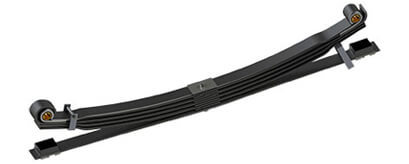
Leaf springs have been a fundamental component of vehicle suspension systems for centuries, providing stability and support to a wide range of vehicles. Their evolution over time has been a remarkable journey, showcasing advancements in material science, design, and engineering to meet the changing needs of the automotive industry.
Early Beginnings
The concept of leaf springs dates back to ancient civilizations, where horse-drawn carriages utilized flexible wooden or metal strips to provide support and cushioning. As the automotive industry emerged, these early leaf springs were adapted for use in early automobiles. Initially, simple semi-elliptical springs made of multiple layers of steel were employed to handle the vehicle's weight and smooth out the ride.
Transition to Modern Materials
With the advent of the industrial revolution, the automotive industry witnessed a shift towards the use of high-strength steel alloys. These alloys offered increased durability and resilience compared to traditional materials. By the mid-20th century, advancements in metallurgy allowed for the production of leaf springs with superior strength-to-weight ratios, enhancing their overall performance and longevity.
Multi-Leaf and Mono-Leaf Spring Designs
In the mid-20th century, engineers began experimenting with different leaf spring designs to improve suspension performance. Multi-leaf springs, which featured several thinner leaves stacked on top of each other, gained popularity due to their ability to distribute weight more evenly and provide a smoother ride.
Later, the mono-leaf spring design emerged, utilizing a single, thicker leaf with varying thicknesses along its length to optimize load distribution and enhance ride comfort. Mono-leaf springs offered advantages in terms of reduced weight, improved handling, and ease of manufacturing.
Composite Leaf Springs
In recent decades, the automotive industry has explored innovative materials such as composite materials for leaf springs. Composite leaf springs are manufactured using reinforced plastics or composite fibers, offering significant weight savings compared to traditional steel leaf springs. This reduction in weight contributes to improved fuel efficiency and reduces the vehicle's overall carbon footprint.
Composite leaf springs are also known for their corrosion resistance, enhanced fatigue life, and the ability to be precisely tailored to specific load requirements. They have become increasingly prevalent in both commercial and passenger vehicles, representing a modern and sustainable approach to leaf spring technology.
Computer-Aided Design and Simulation
The advent of computer-aided design (CAD) and simulation technologies has revolutionized leaf spring design and optimization. Engineers can now use sophisticated software to model, analyze, and simulate various leaf spring configurations, enabling them to fine-tune designs for optimal performance, durability, and cost-effectiveness. This technology has significantly accelerated the development process and facilitated the creation of highly efficient leaf spring designs.
Future Trends and Innovations
Looking ahead, the future of leaf spring technology in the automotive industry appears promising. Advancements in materials science, such as the integration of carbon fiber and other advanced composites, hold the potential to further reduce weight and enhance the performance of leaf springs.
Moreover, research into smart materials and adaptive suspension systems may lead to leaf springs that can adjust their characteristics in real-time, optimizing the ride and handling based on driving conditions and load variations. These innovations will play a crucial role in shaping the automotive landscape, promoting sustainability, fuel efficiency, and improved driving experiences.
In conclusion, the evolution of leaf spring technology in the automotive industry has been a remarkable journey of innovation and adaptation. From humble beginnings as simple wooden or metal strips to the sophisticated composite leaf springs of today, this fundamental suspension component continues to evolve, driven by advancements in materials, design methodologies, and engineering techniques. As we continue to push the boundaries of technology, the leaf spring remains a vital element in ensuring a safe, comfortable, and efficient ride for vehicles of all kinds.
2 notes
·
View notes
Text
Inverted Squeeze Bottle Market Insight | Outlook | Growth Analysis Report 2030
Inverted Squeeze Bottle Market Report has recently added by Value Market Research, this surveillance report establishing the facts based on current scenarios, historical records from 2022 to future forecast upto 2030. This report explicit data of various outlook such as market share, size, growth rates, and industry opportunities and offering an economical advantage for business success. It furnish the 360-degree overview of the competitive landscape of the global industries. Porter’s Five Forces Model analysis has been used to understand the industry’s structure, strength, weaknesses, opportunities, threats and challenges in front of the businesses. Moreover, the report also highlights a sudden occurrence of COVID 19 impact on Inverted Squeeze Bottle market to improve future capacities and other developments.
The research report also covers the comprehensive profiles of the key players in the market and an in-depth view of the competitive landscape worldwide. The major players in the inverted squeeze bottle market include Genesis Industries, Inc., IonWays, LLC, Midland Manufacturing Company, Inc., Kyoraku Co., Ltd., The Original Squeeze Company, Suzhou Innovation Packaging Materials Co.,Ltd, Illing Company, Inc., Kaufman Container Company etc. This section consists of a holistic view of the competitive landscape that includes various strategic developments such as key mergers & acquisitions, future capacities, partnerships, financial overviews, collaborations, new product developments, new product launches, and other developments.
Get more information on "Global Inverted Squeeze Bottle Market Research Report" by requesting FREE Sample Copy at https://www.valuemarketresearch.com/contact/inverted-squeeze-bottle-market/download-sample
Market Dynamics
The growing utilization of squeeze bottles in several industries such as food, drinks, healthcare, and personal care, pharmaceuticals, and so on is the major factor driving the inverted squeeze bottle market. The huge benefits are associated with squeeze bottles, such as it leaves less waste, Better control of food quantity, Easy fit into refrigerator door shelves, and require less space in the refrigerator, which might create high market demand in the coming years across the food industry. The rising popularity of fast food and Italian food like pasta and pizza among consumers across the globe is positively impacting the inverted squeeze bottle market’s growth. Moreover, the rapidly growing food and beverage industry across the globe is likely to create lucrative growth opportunities for key players of the Inverted squeeze bottle market in the coming years.
The research report covers Porter’s Five Forces Model, Market Attractiveness Analysis, and Value Chain analysis. These tools help to get a clear picture of the industry’s structure and evaluate the competition attractiveness at a global level. Additionally, these tools also give an inclusive assessment of each segment in the global market of inverted squeeze bottle. The growth and trends of inverted squeeze bottle industry provide a holistic approach to this study.
Browse Global Inverted Squeeze Bottle Market Research Report with detailed TOC at https://www.valuemarketresearch.com/report/inverted-squeeze-bottle-market
Market Segmentation
This section of the inverted squeeze bottle market report provides detailed data on the segments at country and regional level, thereby assisting the strategist in identifying the target demographics for the respective product or services with the upcoming opportunities.
By Closure Type
Flip Top Cap
Plug Orifice Cap
Screw Cap
Others
By Material Type
Polyethylene Terephthalate (Pet)
Polypropylene (Pp)
High Density Polyethylene (Hdpe)
Others
By Capacity
Up To 100 Ml
100 Ml To 250 Ml
250 Ml To 500 Ml
500 Ml To 750 Ml
Above 750 Ml
By End Use Industry
Food & Beverages
Automobile
Personal Care & Hygiene
Healthcare & Pharmaceutical
Chemicals
Others
Regional Analysis
This section covers the regional outlook, which accentuates current and future demand for the Inverted Squeeze Bottle market across North America, Europe, Asia-Pacific, Latin America, and Middle East & Africa. Further, the report focuses on demand, estimation, and forecast for individual application segments across all the prominent regions.
Purchase Complete Global Inverted Squeeze Bottle Market Research Report at https://www.valuemarketresearch.com/contact/inverted-squeeze-bottle-market/buy-now
About Us:
Value Market Research was established with the vision to ease decision making and empower the strategists by providing them with holistic market information.
We facilitate clients with syndicate research reports and customized research reports on 25+ industries with global as well as regional coverage.
Contact:
Value Market Research
401/402, TFM, Nagras Road, Aundh, Pune-7.
Maharashtra, INDIA.
Tel: +1-888-294-1147
Email: [email protected]
Website: https://www.valuemarketresearch.com
#Inverted Squeeze Bottle Market#Inverted Squeeze Bottle Market Report#Inverted Squeeze Bottle Industry#Inverted Squeeze Bottle Industry Report
2 notes
·
View notes
Text
Navigating the World of BMW Car Electrical Services for Reliability and Innovation
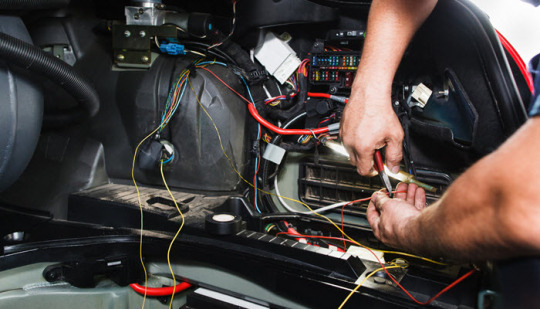
In the ever-evolving landscape of automotive technology, luxury car manufacturers like BMW continue to push the boundaries, integrating sophisticated electrical systems to enhance driving experiences. As demand grows for newer models equipped with advanced features, the reliance on electricity becomes more pronounced, powering a plethora of components that contribute to performance, safety, and convenience.
The Role of Electrical Systems in Modern Cars:
The heart of the technological revolution in automobiles lies in the intricate electrical systems that power various special features. These systems draw their energy from sources like batteries and alternators, allowing innovative components to function seamlessly. Over time, automobile engineers have introduced cutting-edge systems, powered by electricity, to provide essential features that contribute to the overall performance of the vehicle.
Components Powered by Electrical Systems:
Luxury cars, particularly those from brands like BMW, boast an array of advanced systems that rely on electrical power. From air conditioning and stereo systems to windshield wipers and exterior lights, the electrical system plays a pivotal role in enabling these features. Additionally, smart functionalities such as ABS, vehicle stability control, cruise control, and anti-theft systems are made possible by the robust electrical infrastructure within the vehicle.
Primary Functions Powered by Electricity:
Beyond the convenience features, the electrical system in modern cars also powers essential components responsible for the vehicle's primary functions. The starter motor, spark plugs, fuel pump, and oxygen sensors are crucial elements that ensure the car starts smoothly, runs efficiently, and adheres to emission standards. The intricate network of circuits facilitates the flow of current, making these components integral to the overall performance of the vehicle.
Electric and Hybrid Cars: Meeting Environmental Demands:
With an increasing emphasis on reducing emissions and diminishing reliance on fossil fuels, electric and hybrid cars have gained popularity. Electric cars operate solely on battery power, producing zero emissions, while hybrid cars can seamlessly switch between petrol and electricity. These environmentally friendly vehicles underscore the importance of electrical systems, making their regular maintenance and service a top priority.
The Need for Electrical Services:
As cars become more complex with advanced electrical systems, the demand for electrical services has risen. Electrical issues in a vehicle can manifest in various ways, from difficulty starting the car to malfunctions in accessories. When faced with electrical faults, it becomes imperative to inspect critical components such as the battery, alternator, wiring, starter, spark plugs, fuses, relays, and various sensors. Regular inspection and maintenance ensure optimal performance and prevent potential issues that could compromise safety.
Electrical Repairs: Addressing Common Issues:
When a car exhibits electrical problems, several components may require inspection and, if necessary, repairs. Common issues include battery problems, faulty connections, issues with switches, relays, fuses, wires, or the output devices themselves. Signs of electrical faults may include difficulty starting the car, prolonged start times, stalling, and malfunctioning accessories. In-depth examination of critical components, such as the ignition system, lighting system, and various sensors, is crucial for identifying and rectifying issues promptly.
Conclusion:
In conclusion, the evolution of electrical systems in BMW cars reflects the dynamic nature of automotive technology. From powering luxurious amenities to supporting the essential functions of the vehicle, the electrical system is a cornerstone of modern automobiles. As the automotive industry continues to innovate, with a growing emphasis on environmental sustainability, the role of electrical systems becomes even more critical. Regular electrical services and repairs, conducted by qualified professionals at BMW service centers, are essential to ensure the longevity, safety, and optimal performance of these advanced vehicles. Embracing the advancements in electrical systems not only enhances the driving experience but also contributes to a greener and more sustainable future for the automotive industry.
1 note
·
View note
Text
No, Antifa is not the moral equivalent of neo-Nazis
Comparisons between [people] fighting against fascism and tiki-torch wielding anti-Semites are absurd—and dangerous.
Andrew Mitrovica 14 Sep 2017

[image ID: Counter demonstrators clash with white supremacists at the entrance to Emancipation Park in Charlottesville, US. Photograph credits: Steve Helber, Associated Press. /end image ID]
Recently, a fresh pathogen, which poses an urgent threat to public safety and discourse, has appeared suddenly on the political landscape. A batch of “liberals,” saddled with fragile sensibilities, have warned that liberty and lives are being threatened by ordinary, largely anonymous people seized with the duty to confront the ignorance and hate that Hurricane Donald and his abominable acolytes brandish routinely with impunity.
Predictably, the historically illiterate, ubiquitous members of the right-wing commentariat in America and beyond have attempted to tar the Antifa (anti-fascists) for resisting, and, if need be, defending itself against, the delinquents that march en masse at night with torches and mow down innocents in daylight with automobiles.
It’s an old trick: to negate real evil by manufacturing a phantom villain as a convenient foil or facile distraction.
Regrettably, but not surprisingly, this transparent rhetorical slight of hand is magnified repeatedly by an amnesiac establishment media that habitually finds and amplifies moral and intellectual equivalences where none exist.
In their attacks on the Antifa, these “liberals” have joined a pack of conservatives who—apart from accusing anti-fascists of fascism—howl on TV and elsewhere that climate change is a pan-scientific hoax, that Saddam Hussein certainly possessed weapons of mass destruction, that Iraq will eventually be “liberated,” and that Trump will indeed make America “great again.”
Given their unconscionable record, isn’t it about time these charlatans were disqualified permanently from passing judgment on the motives and conduct of others since they forfeited long ago any claim to enjoy any measure of seriousness or subtlety.
Of course, the legion of unrepentant hucksters and their enablers will never recognise, let alone acknowledge, their complicity in trafficking in such calamitous lies and disastrous designs.
So, instead of taking up perpetual residence in pundit purgatory, they have been rewarded with an unfettered licence on “elite” media to continue to defame people who were on the right of history and decency yesterday and are on the right side of history and decency today.
Women like Danuta Danielsson, the Polish-Swedish daughter of a Holocaust survivor who famously swatted her handbag at a gang of neo-Nazi skinheads strutting through a square in Vaxjo, Sweden in 1985.
I challenge the smear merchants to impugn Danielsson and desecrate the memory of the anguish her family endured at the homicidal hands of Nazis by describing her and, in particular, her remembrance-fuelled, spontaneous act, as the personification of fascism.
The same challenge applies to Irmela Mensah-Schramm, a 70-year-old anti-fascist who has devoted the past 31 years to defacing neo-Nazi graffiti and propaganda in public spaces principally across Germany.
Mensah-Schramm’s act of resistance landed her in court, where she was fined for “vandalism” and ordered to stop. Her reply: she’s not going to stop, nor pay the fine.
These days, it’s fashionable among the predominately white, male liberal intelligentsia to join the hysterical assault on the Antifa by insisting that, in effect, Danielsson’s and Menash-Schramm’s “violent” “law-breaking” must be condemned, rather than applauded, because it mirrors the malignant modus operandi of the fascists they defied.
This is absurd.
Even a cursory understanding of recent history reveals that individual and collective acts of resistance by progressive forces have traditionally been the target of these generic, hyperbolic attacks which are designed to delegitimise legitimate protest and marginalise the protesters.
From the 1960s “freedom riders” through to Occupy Wall Street, and the Boycott Divestment and Sanctions (BDS) and Black Lives Matter movements, the same tired polemicists have employed the same tired polemics to try to deflect attention and guilt from the oppressors onto the oppressed.
Words and phrases like: “outsiders,” “agitators,” “provocateurs,” “Crypto-Marxists or fascists,” “bent on mayhem and violence” are the decades-old, cliched staples of this pedantic lot.
Liberals pining for a bucolic anti-fascist campaign will quibble in vain because while the vast majority of anti-fascists are peaceable, they will always be reduced to an ugly caricature by rabid reactionaries who customarily point an accusatory finger at everyone but themselves.
Still, in a windy, densely worded column dripping with condescension, one prominent liberal writer not only castigated the Antifa for squandering its “moral authority,” but claimed—without offering an ounce of empirical evidence in support—that neo-Nazis are “victims” of the exploitative corporate state too, thus requiring our sympathy and consideration.
Intended or not, this astonishing logic—such as it is—resembles Trump’s rambling, semi-coherent assertion that “many sides” were responsible for the violence that took Heather Heyer’s life in Charlottesville, Virginia in early August and that among the army of tiki-torch wielding anti-Semites were some misunderstood “fine people.”
Neo-Nazis are not “fine people,” nor are they “victims.” They are, aptly put, scum. There must be no equivocation, no obfuscation, no shading on this score from any quarter, at any time, for any reason.
To do otherwise is to provide succour to the philosophical descendants of genocidal murderers, who, given the opportunity, would relish enslaving and, once again, executing, wholesale, Jews, Muslims, Roma, homosexuals, the infirm, other vulnerable minorities and, yes, liberals.
Richard Spencer and his verminous brethren are, no doubt, chortling at the profoundly preposterous but increasingly popular media-propelled construct that the Antifa is as pathological as the fascists it reviles.
These are bizarre and dangerous times.
5 notes
·
View notes
Photo
stripperloki:
ameliazan:
kastiakbc:
thelastexistence:
Yves Marchand & Romain Meffre | The Ruins of Detroit
At the end of the XIXth Century, mankind was about to fulfill an old dream. The idea of a fast and autonomous means of displacement was slowly becoming a reality for engineers all over the world. Thanks to its ideal location on the Great Lakes Basin, the city of Detroit was about to generate its own industrial revolution. Visionary engineers and entrepreneurs flocked to its borders. In 1913, up-and-coming car manufacturer Henry Ford perfected the first large-scale assembly line. Within few years, Detroit was about to become the world capital of automobile and the cradle of modern mass-production. For the first time of history, affluence was within the reach of the mass of people. Monumental skyscapers and fancy neighborhoods put the city’s wealth on display. Detroit became the dazzling beacon of the American Dream. Thousands of migrants came to find a job. By the 50’s, its population rose to almost 2 million people. Detroit became the 4th largest city in the United States. The automobile moved people faster and farther. Roads, freeways and parking lots forever reshaped the landscape. At the beginning of the 50’s, plants were relocated in Detroit’s periphery. The white middle-class began to leave the inner city and settled in new mass-produced suburban towns. Highways frayed the urban fabric. Deindustrialization and segregation increased. In 1967, social tensions exploded into one of the most violent urban riots in American history. The population exodus accelerated and whole neighbourhoods began to vanish. Outdated downtown buildings emptied. Within fifty years Detroit lost more than half of its population. Detroit, industrial capital of the XXth Century, played a fundamental role shaping the modern world. The logic that created the city also destroyed it. Nowadays, unlike anywhere else, the city’s ruins are not isolated details in the urban environment. They have become a natural component of the landscape. Detroit presents all archetypal buildings of an American city in a state of mummification. Its splendid decaying monuments are, no less than the Pyramids of Egypt, the Coliseum of Rome, or the Acropolis in Athens, remnants of the passing of a great Empire.
Oh my goodness…
can i go there please
Oh my word.




860 notes
·
View notes
Text
[ad_1] GG News Bureau Seoul, 21st Jan. Assam Chief Minister Himanta Biswa Sarma rolled out the red carpet for potential investors during the Advantage Assam 2.0 roadshow held in Seoul on Monday, aiming to position the state as a prime investment destination. The event, organized by the Indian Chamber of Commerce in South Korea, attracted over 140 prominent business leaders from diverse sectors, highlighting Assam’s growing economic prospects. In his address, Sarma shared his enthusiasm for the engagement with the South Korean business community, emphasizing India’s status as the world’s fastest-growing major economy. “The response from the business leaders was phenomenal. The Korean business community is keen to explore the unique opportunities Assam offers to tap into India’s burgeoning market,” Sarma said on X (formerly Twitter). The roadshow served as a platform for dialogue on collaboration, growth, and investment, with the Chief Minister highlighting the strategic advantages of investing in Assam. He extended a warm invitation to attendees, encouraging them to visit Assam. “I would like to invite all of you once again. Our Ambassador will facilitate the visit. Please come, and I look forward to hosting a Korean delegation at the Advantage Assam conclave,” he added. Sarma also underscored Assam’s potential to house a robust automobile manufacturing ecosystem, noting the region’s proximity to India’s $100-billion auto industry and Southeast Asia. “Today, I met with CEOs and leaders from South Korea’s automobile ancillary firms. I have offered them our state’s full support should they decide to establish a presence in Assam, which could transform the socio-economic landscape of the North East,” he said. The event spotlighted Assam’s role as a gateway to India’s expanding economy, with Sarma reinforcing the state’s capacity to foster international business partnerships and create new avenues for mutual growth and development. The post “Assam Offers Unparalleled Advantages for Investors,” says CM Sarma appeared first on Global Governance News- Asia's First Bilingual News portal for Global News and Updates. [ad_2] Source link
0 notes
Text
[ad_1] GG News Bureau Seoul, 21st Jan. Assam Chief Minister Himanta Biswa Sarma rolled out the red carpet for potential investors during the Advantage Assam 2.0 roadshow held in Seoul on Monday, aiming to position the state as a prime investment destination. The event, organized by the Indian Chamber of Commerce in South Korea, attracted over 140 prominent business leaders from diverse sectors, highlighting Assam’s growing economic prospects. In his address, Sarma shared his enthusiasm for the engagement with the South Korean business community, emphasizing India’s status as the world’s fastest-growing major economy. “The response from the business leaders was phenomenal. The Korean business community is keen to explore the unique opportunities Assam offers to tap into India’s burgeoning market,” Sarma said on X (formerly Twitter). The roadshow served as a platform for dialogue on collaboration, growth, and investment, with the Chief Minister highlighting the strategic advantages of investing in Assam. He extended a warm invitation to attendees, encouraging them to visit Assam. “I would like to invite all of you once again. Our Ambassador will facilitate the visit. Please come, and I look forward to hosting a Korean delegation at the Advantage Assam conclave,” he added. Sarma also underscored Assam’s potential to house a robust automobile manufacturing ecosystem, noting the region’s proximity to India’s $100-billion auto industry and Southeast Asia. “Today, I met with CEOs and leaders from South Korea’s automobile ancillary firms. I have offered them our state’s full support should they decide to establish a presence in Assam, which could transform the socio-economic landscape of the North East,” he said. The event spotlighted Assam’s role as a gateway to India’s expanding economy, with Sarma reinforcing the state’s capacity to foster international business partnerships and create new avenues for mutual growth and development. The post “Assam Offers Unparalleled Advantages for Investors,” says CM Sarma appeared first on Global Governance News- Asia's First Bilingual News portal for Global News and Updates. [ad_2] Source link
0 notes
Text
Union Budget 2025 India's path to global economic dominance
Union Budget 2025: Key Highlights and Expectations
A growing number of sectors, business executives, and legislators are looking forward to the Union Budget 2025. This budget offers an extremely important opportunity for lawmakers to address urgent issues and set the path for long-term economic growth. The Deloitte India's pre-budget booklet highlights crucial areas that need concentrated attention and provides thorough insights into important concerns along with practical solutions.
According to the booklet, key elements such as tax reforms, sector-specific policies, and economic development acceleration are anticipated to be given top priority in the next budget. This analysis delves into the Budget 2025 Expectations and their potential impact on India's economic landscape.
Current Economic Environment and Upside Trends
In recent years, India's economic progress has been marked by both possibilities and challenges. The fluctuations in growth are primarily attributed to global and domestic factors, such as geopolitical tensions, inflationary pressures, and disruptions in supply chains. Therefore, these issues have created uncertainties for businesses and affected trade, investment, and overall economic stability. For instance, geopolitical conflicts, including wars and strained international relations, have disrupted global supply chains, impacting exports and raising import costs. Additionally, inflation—driven by rising food and energy prices—has constrained consumer spending and posed challenges for monetary policy.
Robust Infrastructure Spending
The Indian government prioritizes infrastructure development, increasing capital expenditure by 28.4% in FY24 and 17% in FY25 to improve connectivity, reduce logistics costs, and attract investments.
Strong Credit Growth
The Indian banking sector has improved with reduced NPAs and stronger lending, boosting credit growth. MSME credit grew by 13.4% for small enterprises and 20.5% for medium enterprises in Q2 FY25, signaling revived investment and increased economic demand.
Strong resurgence in the services sector
The services sector, a key driver of India’s GDP and jobs, grew 7.6% in FY24 and is projected to grow 7.1% in H1 FY25. Services exports, led by IT and business services, rose 21.3% year-on-year, while finance, insurance, and real estate grew over 9.2%, boosting urban jobs and consumption.
Budget Expectations 2025: Key Focus Areas
Deloitte India's pre-budget booklet highlights several imperative topics that are expected to be the focus of discussions.
Taxation Reforms > Simplification of tax compliance processes for individuals and businesses is a key request. India might become a more alluring place to invest if policies like lowering corporation tax rates for new manufacturing facilities and clarifying complicated tax laws are implemented. > Innovation is predicted to be fostered by R&D incentives, such as broadening the scope of tax benefits for patents, copyrights, and other types of intellectual property.
Inflation Management Food inflation has been a recurring issue. The government is likely to focus on supply-side solutions, such as improving the agricultural value chain and promoting direct benefit transfers to support rural consumption
Export Competitiveness Aiming for $2 trillion in exports by 2030, policies like duty exemptions, simplified export compliance, and rationalized tariffs are expected.
Infrastructure Development It is anticipated that infrastructure spending, one of the pillars of India's growth plan, will continue to get support. The focus is expected to shift to investments in healthcare, education, and multimodal logistics parks.
Sector-Specific Budget 2025 Expectations
Deloitte’s insights also outline specific measures for key industries:
Automobile Sector: Maintaining the expansion of electric and hybrid mobility depends on streamlined GST classifications and lower rates for hybrid vehicles.
Technology and Skilling: Increased spending for educational programs and digital infrastructure will spur innovation and job growth.
Healthcare: Funding increases for accessible healthcare and medical research will close current gaps and enhance accessibility.
Policy Recommendations from Deloitte India
Deloitte India's pre-budget booklet emphasizes a few strategic policy measures:
Introducing amnesty schemes to lessen indirect tax litigations.
Encouraging global collaboration through tax-friendly policies for multinational corporations.
Expanding social security benefits for gig and platform workers to ensure inclusive growth.
Conclusion: A Budget for Long-Term Growth
The Union Budget 2025 is poised to strike a balance between immediate fiscal needs and long-term strategic goals. By addressing core issues such as taxation, infrastructure, and social equity, the government has the opportunity to set India on a robust growth trajectory. Deloitte India’s pre-budget booklet provides a roadmap for realizing these ambitions, reinforcing the need for thoughtful policy interventions.
0 notes
Text
Top-Ranked Colleges for Diploma in Engineering in Uttar Pradesh in 2025
Uttar Pradesh has emerged as a hub for technical education, hosting some of the most prestigious colleges for engineering diplomas. Aspiring students searching for the Top-Ranked Colleges for Diploma in Engineering in Uttar Pradesh in 2025 can look forward to world-class education, state-of-the-art facilities, and strong industry connections. This article highlights the best options for students and how they stand out.
Why Choose Uttar Pradesh for a Diploma in Engineering?
Uttar Pradesh is home to the best university in Uttar Pradesh and offers numerous advantages for engineering students:
Diverse Academic Institutions
The state boasts the best colleges in Moradabad, providing quality technical education.
A wide range of specializations ensures students can pursue their preferred engineering fields.
Affordable Education
Compared to other states, tuition fees are reasonable, making quality education accessible to all.
Thriving Industrial Landscape
Opportunities for internships and placements in industries like manufacturing, IT, and construction.
Government Initiatives
Scholarship programs and skill development schemes support students in achieving their goals.
Features of Top-Ranked Colleges in 2025
The top-ranked colleges for Diploma in Engineering in Uttar Pradesh in 2025 distinguish themselves through the following features:
Modern Infrastructure
Equipped with advanced labs and workshops.
Digital classrooms and e-learning facilities enhance the learning experience.
Experienced Faculty
Professors with industry expertise provide practical insights.
Personalized mentoring to help students excel academically and professionally.
Strong Industry Connections
Collaboration with leading companies ensures better internships and placements.
Regular guest lectures and workshops from industry leaders.
Comprehensive Curriculum
Courses designed to meet current industry demands.
Focus on practical knowledge and hands-on training.
Best Colleges in Moradabad for Diploma in Engineering
Moradabad stands out as an educational hub in Uttar Pradesh, hosting some of the best engineering colleges in Moradabad. These colleges are renowned for:
High Placement Rates
Partnerships with top companies ensure job opportunities post-graduation.
Specialized Programs
Offering diplomas in various engineering streams, including mechanical, civil, and electrical engineering.
Focus on Skill Development
Hands-on projects and training programs to enhance employability.
Supportive Learning Environment
Student-friendly policies and modern facilities create an ideal academic atmosphere.
Choosing the Best University in Uttar Pradesh
The best university in Uttar Pradesh provides a holistic educational experience. Key factors to consider include:
Academic Excellence
Consistently ranked among the top universities for technical education.
Innovative Research Opportunities
Promotes innovation and research in engineering disciplines.
Robust Alumni Network
Successful alumni who guide and mentor current students.
Global Exposure
Exchange programs and collaborations with international institutions.
Popular Engineering Streams for Diploma Students
The top-ranked colleges for Diploma in Engineering in Uttar Pradesh in 2025 offer a wide array of streams. Some of the most sought-after include:
Mechanical Engineering
Focus on machine design, manufacturing, and maintenance.
High demand in the automobile and manufacturing sectors.
Civil Engineering
Covers construction, infrastructure development, and project management.
Ample opportunities in government and private projects.
Electrical Engineering
Emphasizes power systems, electronics, and renewable energy.
Growing scope in green energy initiatives.
Internship and Placement Opportunities
The best engineering colleges in Moradabad prioritize internships and placements to ensure students are job-ready. Features include:
Industry Partnerships
Collaborations with top companies like Tata, Infosys, and L&T.
Dedicated Placement Cells
Provide training in resume building, interview preparation, and soft skills.
On-Campus Recruitment Drives
Leading companies visit campuses to hire talented graduates.
How to Secure Admission in Top Colleges
Admission to the top-ranked colleges for Diploma in Engineering in Uttar Pradesh in 2025 involves the following steps:
Eligibility Criteria
Completion of 10th grade with a strong academic record.
Entrance Exams
Some colleges require entrance test scores, while others offer direct admission.
Application Process
Submit applications through online portals or in-person at the college.
Counseling Sessions
Attend counseling to choose the best college and specialization.
Why 2025 is the Best Year to Enroll
The year 2025 brings exciting opportunities for diploma students:
Technological Advancements
Updated curricula to include the latest industry trends.
Increased Industry Demand
Growing need for skilled engineers in various sectors.
Government Support
Initiatives to promote technical education and skill development.
Enhanced Learning Facilities
Colleges are investing in better infrastructure and resources.
Conclusion
Choosing the Top-Ranked Colleges for Diploma in Engineering in Uttar Pradesh in 2025 is a decision that can shape your career. With institutions like the best university in Uttar Pradesh and the best engineering colleges in Moradabad, students are assured of quality education and excellent career prospects. Focus on practical learning, industry exposure, and skill development to achieve success in the ever-evolving engineering field.
0 notes